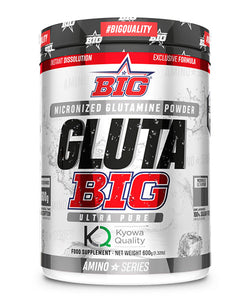
TAKING GLUTAMINE IS BADLY TAUGHT
Sergio Guerrero
INTRODUCTION
In this new entry we will address the correct use of Glutamine . And even today it is still thought that supplementation would increase or maintain muscle mass, or lose fat. Its use has many nuances, which we will detail below.

WHAT IS IT?
Glutamine is one of 20 naturally occurring amino acids found in protein-rich foods. It is also the most abundant amino acid in the bloodstream; and also constitutes 30% to 35% percent of the amino acid nitrogen in the blood. It is known as a semi-essential amino acid, that is, the body itself synthesizes it in part, and the rest comes from the diet. Up to 60% of skeletal muscle is composed of glutamine, hence its use by the fitness industry.
Although glucose is a vital metabolite and the main fuel for a large number of cells in the body, cells of the immune system, such as lymphocytes, neutrophils, macrophages, use glutamine at high rates similar to or greater than glucose under catabolic conditions, such as sepsis, stress, recovery from burns or surgery and malnutrition. In addition to the cells of the immune system, intestinal cells also use it as a substrate.
Glutamine is currently routinely supplied as a component of clinical nutritional supplementation for pre- and post-operative patients, and also for many elite athletes to restore immune functions.
We can find it in both animal and vegetable proteins.
Foods rich in glutamine:
- Corn
- White rice
- Tofu
- Milk
- Veal
- Eggs
METABOLISM AND MECHANISMS OF ACTION
Throughout the body, the concentration and availability of glutamine depends on the balance between its synthesis and/or release and absorption by human organs and tissues. The lungs, liver, brain, skeletal muscles, and adipose tissue have specific glutamine synthesis activity.
On the other hand, tissues that mainly consume glutamine, such as the intestinal mucosa, leukocytes and renal tubule cells, have high glutaminase activity and cofactors capable of degrading glutamine. However, the liver can become a “consumer” of glutamine, and tissues, such as muscle tissue, can have reduced glutamine synthesis under certain conditions, such as reduced carbohydrate and/or amino acid intake, high catabolic situations, and/or illness and stress.
Many other factors, mainly glucocorticoids, thyroid hormones, growth hormone and insulin, can modulate the activity carried out by enzymes regulating glutamine metabolism.

- Figure 1: Glutamine production and utilization between tissues in healthy and catabolic/hypercatabolic situations.
The two main intracellular enzymes are glutamine synthetase (GS) and phosphate-dependent glutaminase (GLS) (Fig. 1)

- Figure 2: Glutamine synthesis and hydrolysis.
Regarding mechanisms of action, we will address those that for me the use of glutamine could be a good option:
- Immune system
- Digestive system
GLUTAMINE AND IMMUNE SYSTEM
One of the most important functions of glutamine is its role in the immune system. It is a critical fuel source for immune cells, including white blood cells and certain intestinal cells.
If the body's need for glutamine is greater than its ability to produce it, the body can break down protein stores, such as muscles, to release more of this amino acid.
Additionally, immune system function can be compromised when sufficient amounts of glutamine are not available. Studies have also reported that glutamine supplements can improve health, decrease infections, and lead to shorter hospital stays after surgery.

- Figure 3: Intertissue metabolic flux of glutamine that begins in skeletal muscle, liver and intestine continues in immune cells
Among nutrients that have important immunological functions, glutamine is probably the most widely recognized immunonutrient, as it is required for key immunoinflammatory responses. Glutamine plays several essential functions in almost all cells in the body, involving complex and dynamic regulations.
Glutamine is key to intermediary metabolism and nitrogen exchange between organs through ammonia transport between tissues. Glutamine can also be oxidized in the Krebs cycle as an energy source, serve as a substrate for the synthesis of nucleotides, the synthesis of NAD + and NADPH, in addition to having antioxidant properties by acting as the main donor of glutamate for the synthesis of glutathione*
The function of glutamine goes beyond serving as a metabolic fuel or precursor for protein synthesis. This amino acid is also an important regulator of leukocyte function, acting on both gene expression and the activation of signaling pathways.
*Glutathione: It is a small protein composed of three amino acids: cysteine, glutamic acid and glycine. Glutathione participates in the elimination of toxins from cells, the transport of vitamins and minerals, the regulation of the immune system and, above all, in antioxidant protection.
GLUTAMINE AND DIGESTIVE SYSTEM
Among the various tissues that use glutamine at high rates, the intestine uses about 30% of total glutamine, indicating that it is a key nutrient for the intestine.
Glutamine metabolism in the intestine has been intensively studied. Its functions include maintaining nucleotide metabolism and intestinal barrier function, modulating inflammation, and regulating stress responses and apoptosis (Fig. 3). At the same time, the effectiveness of glutamine supplementation has been tested in human models of intestinal diseases.
Glutamine has been shown to promote enterocyte proliferation, regulate tight junction proteins, suppress proinflammatory signaling pathways, and confer protection against apoptosis and cellular stress under normal and pathological conditions.
Many studies suggested that enterocytes are responsible for much of the production and metabolism of glutamine on the intestinal mucosa. In fact, glutamine utilization by isolated human enterocytes was reported to be approximately 14.90 μmol/min/g dry cell weight. Such use is associated with a significant increase in oxygen consumption after prolonged exercise.
Furthermore, the provision of exogenous glutamine has had beneficial effects in humans, particularly in improving intestinal function. For example, parenteral glutamine supplementation results in improvement in nitrogen balance, intestinal barrier function, and a lower incidence of infections in critically ill patients or patients after surgery.
On the other hand, glutamine supplementation affects the composition of the intestinal microbiota of obese people. Glutamine supplementation decreased the ratio of Firmicutes to Bacteroidetes and reduced Actinobacteria in obese individuals, compared to alanine supplementation.

- Figure 4: Proposed mechanisms of action of glutamine in intestinal cells.
DOSAGE AND SIDE EFFECTS
The amount and frequency of glutamine you take depends on the reason you take it. Generally, clinical trials use doses of 5 to 45 grams per day for up to six weeks without negative side effects. A more personalized recommendation to treat digestive problems could be to use 0.5g/kg.
REFERENCES
- Benjamin, J., Makharia, G., Ahuja, V., Anand Rajan, K., Kalaivani, M., Gupta, S., & Joshi, Y. (2011). Glutamine and Whey Protein Improve Intestinal Permeability and Morphology in Patients with Crohn's Disease: A Randomized Controlled Trial. Dig Dis Sci, 57(4), 1000-1012. doi:10.1007/s10620-011-1947-9.
- Cruzat V, Macedo Rogero M, Noel Keane K, Curi R, Newsholme P. Glutamine: Metabolism and Immune Function, Supplementation and Clinical Translation. Nutrients. 2018; 10(11):1564. https://doi.org/10.3390/nu10111564
- Kim MH, Kim H. The Roles of Glutamine in the Intestine and Its Implication in Intestinal Diseases. Int J Mol Sci. 2017 May 12;18(5):1051. doi:10.3390/ijms18051051. PMID: 28498331; PMCID: PMC5454963.
- Kim, Min-Hyun & Kim, Hyeyoung. (2017). The Roles of Glutamine in the Intestine and Its Implication in Intestinal Diseases. International Journal of Molecular Sciences. 18. 1051. 10.3390/ijms18051051.
- Larson, S., Li, J., Chung, D. and Evers, B. (2007). Molecular mechanisms contributing to glutamine-mediated intestinal cell survival. AJP: Gastrointestinal and Liver Physiology, 293(6), pp.G1262-G1271.
- Newsholme, P., Diniz, V., Dodd, G., & Cruzat, V. (2023). Glutamine metabolism and optimal immune and CNS function. Proceedings of the Nutrition Society, 82(1), 22-31. doi:10.1017/S0029665122002749
- Perna S, Alalwan TA, Alaali Z, Alnashaba T, Gasparri C, Infantino V, Hammad L, Riva A, Petrangolini G, Allegrini P, Rondanelli M. The Role of Glutamine in the Complex Interaction between Gut Microbiota and Health: A Narrative Review . Int J Mol Sci. 2019 Oct 22;20(20):5232. doi:10.3390/ijms20205232. PMID: 31652531; PMCID: PMC6834172.
- Pugh JN, Sage S, Hutson M, Doran DA, Fleming SC, Highton J, Morton JP, Close GL. Glutamine supplementation reduces markers of intestinal permeability during running in the heat in a dose-dependent manner. Eur J Appl Physiol. 2017 Dec;117(12):2569-2577. doi:10.1007/s00421-017-3744-4. Epub 2017 Oct 20. PMID: 29058112; PMCID: PMC5694515.
- Zuhl, M., Lanphere, K., Kravitz, L., Mermier, C., Schneider, S., Dokladny, K. and Moseley, P. (2013). Effects of oral glutamine supplementation on exercise-induced gastrointestinal permeability and tight junction protein expression. Journal of Applied Physiology, 116(2), pp.183-191




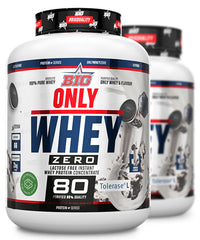
![CREABIG [Creapure®]](http://bigsupps.site/cdn/shop/products/producto_BIG_creabig_creapure_250g_0noflavour_500x600_8c48a126-a2a2-46a5-9bbd-8763ab82d768_200x.jpg?v=1757315967)
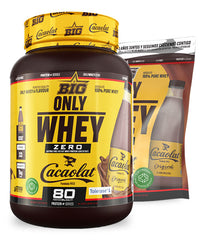
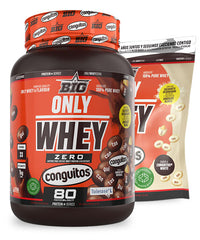

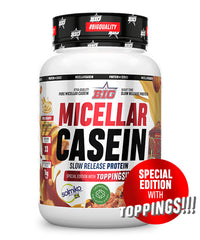
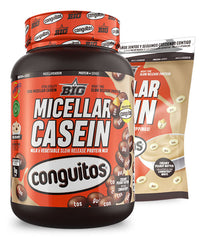
![CFM ISO ZERO [saco]](http://bigsupps.site/cdn/shop/files/producto_cfm_doypack_0noflavour_500x600a_200x.jpg?v=1750981452)
![CLEAR ISO ZERO [750g]](http://bigsupps.site/cdn/shop/files/producto_BIG_clearprotein_icepop_0noflavour_500x600a_200x.jpg?v=1757074297)
![CREABIG FIESTA® KOJAK® flavor - [250g]](http://bigsupps.site/cdn/shop/files/producto_BIG_creabig_kojak_0noflavour_500x600a_200x.jpg?v=1763548822)
